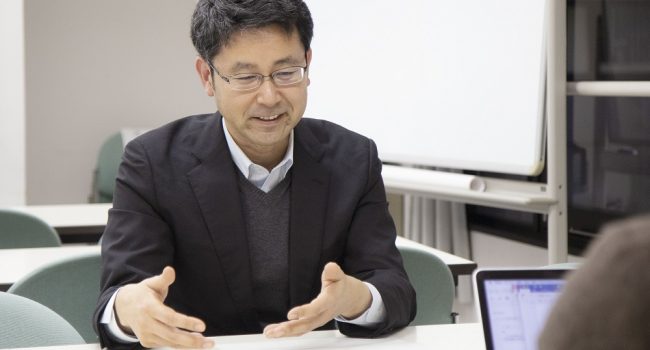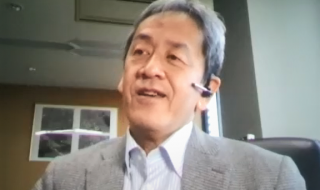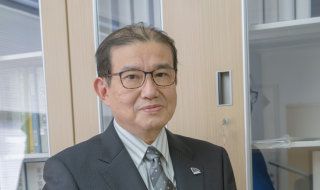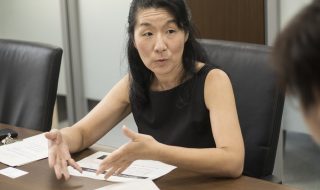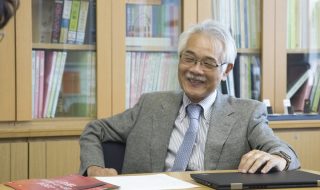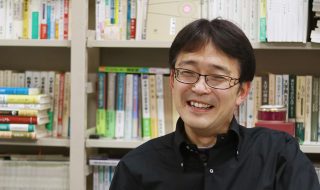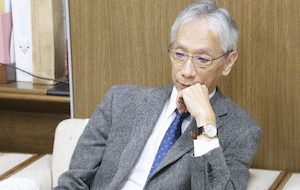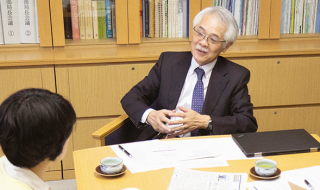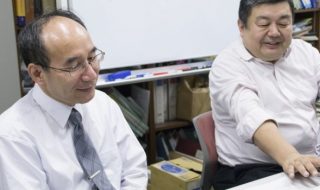Facilitating creative collaboration in mechanical engineering: “Exercise of Machine Design II”
When was the current framework of “Exercise of Machine Design II” first conceptualized, and how long has it been around?
Traditionally, the course name has been in the curriculum, but the course itself has been designed differently by different faculty members over the years. The professors who taught this course before us took a new approach focusing on teaching “objectives and specifications” as two key priorities. We have incorporated their approach to ours thereafter.
In the past machine design education, “whether a design is producible or not” used to be the center of discussion. What was often argued in class was, for example, that this particular design of components would be too costly or too complex to manufacture. This indeed is a critical point of discussion, but after all, once students graduate and start their engineering career, they will be trained to think this through thousands of times.
That being the case, the focus of this course was shifted to exploring what students wanted to design. In our practice, students are asked to lay out a design and go through the whole structure planning process, rather than merely constructing what seems producible. This goal-oriented approach started about 15 years ago, and from then to now, course themes have been updated year by year. We used to ask some guest lecturers from the industry to join our teaching effort, but not anymore. The course is now taught by faculty members of the university.
“Creativity education” is one of the key concepts of the course. What inspired you to teach creative skills?
Many of our mechanical engineering graduates engage in these jobs that challenge their creative skills to produce new machines and advanced mechanical technologies. Ironically, what is typically taught in specialized courses at the university level is how to test certain products, but not how to produce new products. Nonetheless, creative skills are essential in students’ career paths, whether they choose to work in industry or academic research. We believe boosting their creative skills through practices should be quite meaningful for their career development.
Is it a widely acknowledged notion in the field of mechanical engineering?
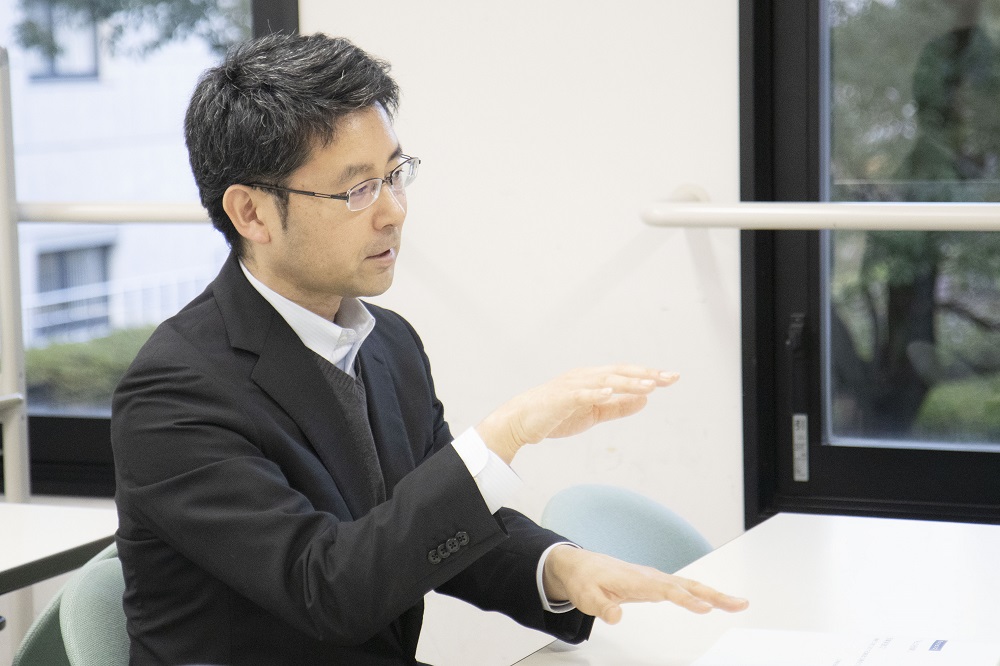
I think it is more or less understood among mechanical engineers. To be more specific, designing is a skill that is classified into two levels: one is to make technical drawings , and the other is to literally create designs. Technical drawing is a designing skill that is very basic and requisite for all engineering jobs. Learning how to make technical drawings is like studying a new language, as drawings are intended to communicate ideas efficiently while not creating anything new. At an advanced level lies the other designing skill that requires creative skills. Designing in this sense means defining what a designer wants to externalize, which should be made clear before making its technical drawings . As far as I know, not so many university programs, or even mechanical engineering courses, teach how to design creatively from scratch.
Do you think that creativity as a higher-order skill is highly valued primarily because university graduates are asked to demonstrate creativity in tackling problems and tasks at work?
Definitely yes. When it comes to designing, there is no right or wrong. Whether all the logics discussed in the course of designing are reasonable or not is never answered. Generally, university students are trained to identify the shortest and most efficient route to reach a given answer. In creativity education, conversely, we are challenged to tackle such issues whose answers are not clear even to instructors. Designing means “creating something new without any premises that our efforts should lead us to a definite answer, but we should keep moving forward, believing that there must be an answer somewhere down the road.” With this belief, our students go through practical design training to find their way through the maze.
Student participation in “group work” is a key ingredient in “creativity education.” For those students who have studied with textbooks individually, it may sound challenging to work closely with others while not knowing where they are going. Do you have any agenda in bridging the two concepts?
Working in groups is undoubtedly beneficial in boosting students’ creativity. In the first place, most students are not used to working with others in groups or teams, so doing simple group assignments can be good training. Besides, no matter how hard students work to brainstorm for design ideas, they tend to overlook flaws and mistakes when working alone, which can be eliminated or detected by other students when working in groups. Another important aspect is that group work gives students a chance to practice communicating their ideas to others, and they learn a lot from this experience. Ideas are afloat in each student’s mind in “such and such” forms, but being able to verbalize these ideas to communicate with others in a clear-cut manner is a different story. Learning how to do so is one of the key training points. Some students may find something illogical about their statements when they try to organize their ideas in such a way that makes sense to others. Ideas are transformed into communicative messages if they are well organized. In this sense, I think student engagement in group work has a synergetic effect on creativity education.
How far do you guide your students through when setting a theme?
All I say at the beginning is, for example, “create a bipedal walking robot.” Occasionally, I add further technical instructions such as “with only one motor” and “the robot should walk with its legs moving in an alternating pattern.” Other than giving these specifications, I leave students to work in groups on their projects. Then, how do they set the walking speed of their robot? One group works on a therapeutic robot, which probably takes slow and gentle steps. If a group aims to create a robot for kids to play with, it would be more amusing if their robot walks quickly. Like this, each group envisions the target users of their robot, and adjust its walking speed accordingly. In other words, each group takes its own approach to achieve the common goal of creating a walking robot.
If goal setting comes first, I assume it would be difficult to finish the whole creating process within a semester. How do you manage your time to get it all done?
Once we decide on a theme of the course, instructors test with the theme and check approximately how much time would be required. That’s not sufficient, though. Students’ progress should be closely monitored by the instructors, as students have no clue how far they have come in their project and how much further left to go. Without prior experience working in this field, students can easily get lost in measuring their progress. Designing is an endless process with “no specific goal to achieve.” For this reason, instructors should take responsibility for supervising students’ progress as much as needed.
Is there anything special that you do to facilitate students in developing their creativity in class?
I encourage students to brainstorm and generate as many ideas as possible. As a training to learn how to design efficiently, I ask them to pick up the best idea from a pool of candidates and explain the reason why they think it is the best one. Their explanations are not 100% rational, and the best I can judge at this point is whether their ideas and concepts are more or less convincing. Nevertheless, having a collection of small ideas is absolutely better than not having any. Ideas take a better shape every time they are filtered and optimized.
At the end of this course, what feedback do you receive from your students?
Many of my students talk about their experiences with group work. Students up to high school are formed into groups and are guided to walk along paved paths to reach an already known goal. In my class, students are randomly thrown into groups of four to five members, and are asked to create their own paths without specific guidance or direction given. Some student commented that working in groups was a true learning experience, and one student said “I was given a chance to discuss with my groupmates whose scope of expertise was as wide as mine, which I found was really inspiring and eye-opening.” What this student means is that their shared expert knowledge, which does not require a detailed explanation, facilitates a smooth flow of discussions. I guess this smoothness is so exhilarating as an experience.
A common pitfall in the classroom is that instructors advise their students not to do this way and not take that way. Likewise, students are prone to ask what could be potential risks to avoid. What’s your teaching philosophy in this point?
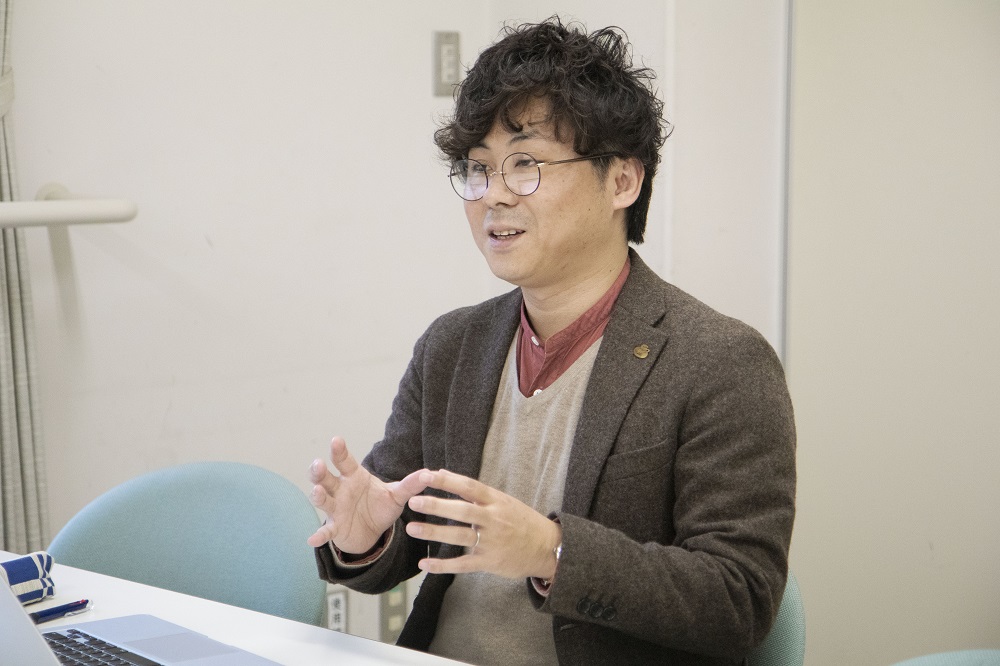
My course is primarily practice-oriented, inviting students to engage in doing practice and learning through experience. Their physical and cognitive learning experience that no textbooks can provide will eventually turn into professional knowledge. I also insist that lessons learned from failures are the best lessons, as students will never repeat the same mistakes. When they fail, I ask them to detail what they did and how, and to reflect on what lessons the failure taught them. For their learning experience to be rich and diverse, we instructors try not to say too much about dos and don’ts.
How do you share teaching responsibilities with other instructors?
We take turns on a day-by-day basis, and there are no fixed duties assigned to individual instructors. The way they teach may differ from one another, but I don’t see any problem with this. It’s only natural that different instructors adopt different approaches, which is often seen in work settings as well. After all, it is up to the students themselves who must decide what advice to absorb and what not to take seriously, to find their way.
Do you have any plans to improve this course?
Not really, the current form is pretty much satisfactory to us. If I could wish more, I want to see more intergroup competitions. Discussions among group members elevate to a highly professional level, but at the same time, each group could spur their competitiveness more if stimulated by other groups. “Since that group takes this strategy, we should lay out our plan in such and such ways.” This kind of attitude will spark real competition among groups.
Do you have any message for students?
Observe objects from different aspects – it is an essential skill to develop creativity. Creative work may be daunting if you just look at an object in the same way as others do. Try to look at different aspects of the object with fresh eyes: its front and back, sides, and such, and you’ll gain some new insights that may inspire your creative journey. That’s the biggest lesson I can teach my students. “Observing objects from different aspects” is always coupled with “presenting a rational reason for choosing one over others.” You could only justify your reasoning by exemplifying that your multifaceted observation has led to determining the best idea out of many. If you simply present what you think is the best idea by only looking at its single aspect, critics will ask you whether other aspects have been considered in the idea screening process. Conversely, the idea that has been filtered through multifaceted criteria should be the most profound one of all. This is the point I want to highlight and ensure that my students understand the message.

(Recording day: December 16, 2019)
List of Interviews


